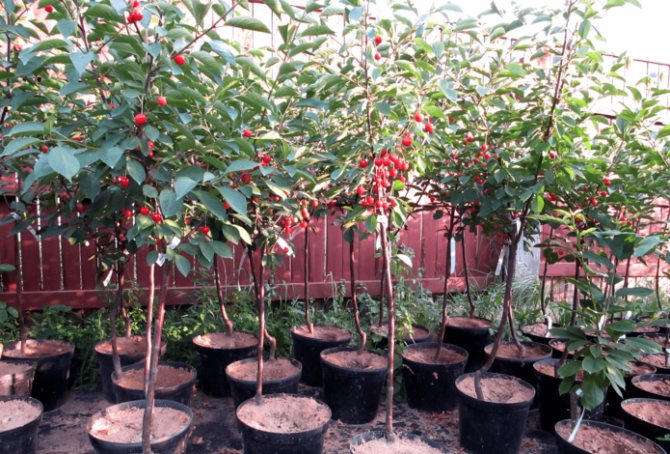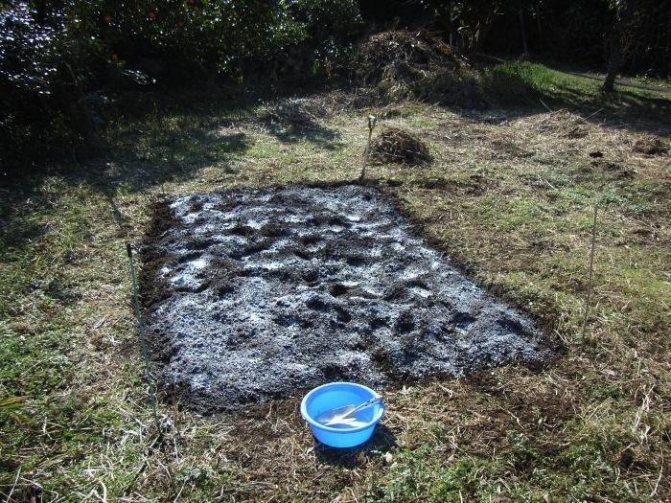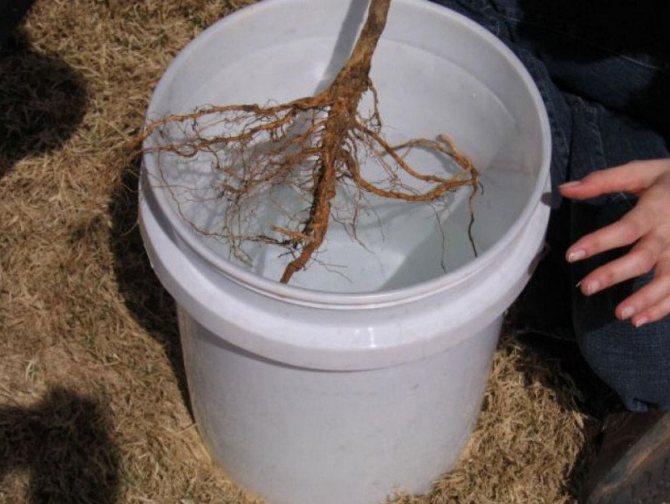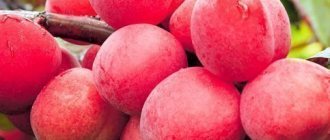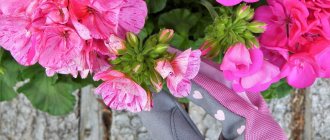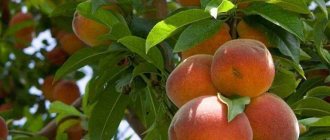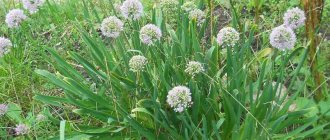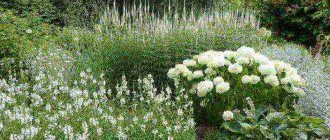What are the characteristics of black-fruited varieties
Black cherry varieties have the following characteristics:
- Medium-sized trees, maximum height of an adult plant is 4 m.
- The crown is branched, spreading.
- The leaf plates are large, with a glossy sheen, dark green shades and denticles along the edges.
- On an adult tree, the bark is gray, on young shoots it is dark green.
- High yield rates. With proper care and timely harvesting, up to 25 kg of ripe berries are obtained from the tree.
- During the flowering period, large flowers of a white-pink hue bloom. Each inflorescence has 2-4 flowers.
- Ripe berries are dark burgundy, almost black, with dark pulp and juice.
- The taste of the fruit is sweet and sour.
- Trees are resistant to severe frost.
- Weak immunity to fungal and viral infections.
Important! Ripe berries often burst. Therefore, the harvest of black cherries is carried out a few days before the onset of full maturity.
Description
The plant is quite compact, the usual height of the tree is 3 - 4 meters. The crown of Rossoshanskaya black is rare, the foliage is weak. Over time, there is a strong exposure of the branches that make up the basis of the crown. The shape of the crown is pyramidal, with a wide base or hundred-like (according to the State Register - spherical-raised). The bark covering the trunk is gray, mostly smooth, sometimes with slight roughness; longitudinal cracking is absent or only slightly manifested. In mature trees, the bark darkens and becomes grayish-black. The number of convex lentils is large. They range in size from long and narrow to moderate in length and width. The curliness of the trunk was not noticed. The shoots of the variety are upright, less often with a slight bend, internodes are medium or long. The young shoot has a greenish-brown bark, then a grayish tint appears and a characteristic longitudinal striping at the base (alternating stripes of silver-gray and olive-brown shades). The shoot is glabrous, moderately covered with small gray transverse lenticels. Cherry leaf bud, ovoid, with a pointed tip, large - 4 - 5 mm, spaced from the shoot. The flower bud has a similar shape, but the top is more rounded, the size is large - 4 - 5 mm, rejected from the shoot.
The leaves of the variety are oval, with a strongly, sometimes sharply pointed tip, the base is arcuate or broadly wedge-shaped, the edges are double-toothed, with medium or fine serration. The size of the leaf blade of Rossoshanskaya black on young shoots: length 9 - 10 cm, width 4 - 5 cm. The surface of the leaf is leathery, slightly wrinkled along the lateral veins, not pubescent, with a slight sheen. Concavity is observed to a greater or lesser extent along the central vein. The color of the cherry leaf plate is green above, grayish-green below, the underside of the leaf has very sparse and weak pubescence along the lateral veins. The petiole is slightly pubescent from above, glabrous below, of a dull, dirty-burgundy shade, the thickness is usual, the length is 20 - 25 cm. The glands are from 1 to 2, however, sometimes they are absent. Rossoshanskaya black has no stipules.
A generative bud contains 2 flowers, rarely 1 or 3.The shape of the flower is wide-chained, diameter is 20 - 25 mm, petals are rounded or wide-round (width is greater than height), the arrangement is overlapping. At the very beginning of cherry blossoms, the flowers are snow-white, towards the end they acquire a pinkish tint. The stigma of the pistil is insignificant, it rises 1 - 2 mm above the anthers. The pistil with the ovary is 10 - 12 mm long, the stamens are 5 - 6 mm long. The calyx is short-bell-shaped, the sepals are elongated-broad-lanceolate, unclosed, serrated, pink at the edges, by the end of flowering they acquire a pink-purple color. The sepals are equal to the length of the calyx tube; at the beginning of flowering, the sepals are erect, then bend back and press against the tube.
Drupes are above average, weighing from 4.0 to 4.5 grams. Dimensions: height 21 mm, width 21 mm, thickness 19 mm. The shape is rounded or somewhat rounded-oval, from the sides there is a slight or medium flattening, the surface is tuberous. The top of the fruit is rounded, the remnants of the pistil in the form of a point are hardly noticeable, the funnel is shallow and wide. The skin is glossy, dark cherry, almost black in color. The pulp of a uniform color is dark cherry, almost black. The consistency is dense, which is not typical for cherries, thick, fleshy, juicy. The juice is colored dark red. The taste is very pleasant, sour-sweet, the assessment of the tasters is 4.5 points. 100 grams of Rossosh black pulp contains: soluble solids from 10.9 to 18.3%, sugars from 8.5 to 12.3%, titratable acids from 1.1 to 1.9%, tannins and dyes 0, 1 - 0.2%. The peduncle is short, only 2.5 - 2.8 cm long, up to 1 mm thick, the fusion with the stone is average. In fully ripe berries, the separation from the stalk is almost dry. In immature, the stalk can be separated with a small piece of skin, which can cause sap to escape. The stone weighing 0.33 grams is considered small, occupying about 7.3% of the total mass of the drupe. The color is brown-beige. The shape of the stone is rounded-oval, with a beveled and rounded top, a rounded and often flat base. From the pulp it is badly dressed.
The main differences from red-fruited
Unlike red cherry varieties, black fruit crops do not lose annual yield as the trees age.
Although red cherries are sweeter in taste, compotes and jams are tastier and more aromatic precisely from black varieties of berries.
Black fruits are larger and juicier, therefore they are more often used in the food industry.
The flesh of red varieties of berries is light, and the juice is transparent, colorless.
Red cherry varieties are considered early ripening, while black fruits ripen towards the end of summer.
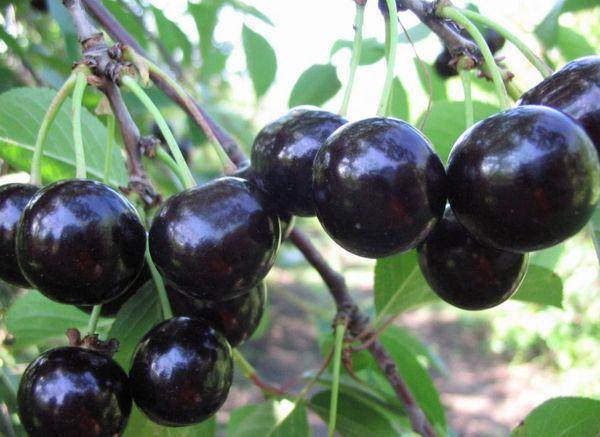
The main tree in the gardens of Russia
Cherry is not just a tree familiar to everyone, the presence of which in the garden can surprise someone. For the first time it became known about him in the XI century. The love of gardeners for this tree lies in the fairly simple care and variety of varieties. All cherries are divided into two categories: morel and amorel. Morel is a black-fruited cherry, while amorel is the name for varieties in which the skin of the fruit is red or light pink.
One of the most popular and widespread types of cherries is black and such varieties as "Vladimirskaya", "Zhukovskaya", "Rossoshanskaya black", "Black large", "Leningradskaya black", etc.
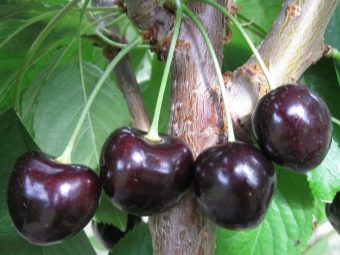

Morel
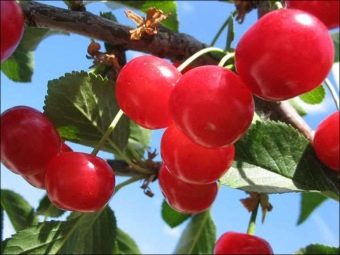

"Amorel"
The best varieties of black cherries
Varieties of black cherry differ in the size of the trees, the ripening of the fruit and the size of the berries.
Morel Bryanskaya
Although the cherry variety is called Morel Bryanskaya, a fruit crop was bred more than 200 years ago in the Netherlands.
The trees are small, grow up to a maximum of 4 m. The fruit crop is self-fertile, does not require additional pollinators and has excellent immunity against fungal and viral infections.Fruits ripen later, the berries are large, juicy, with a sweet and sour taste.
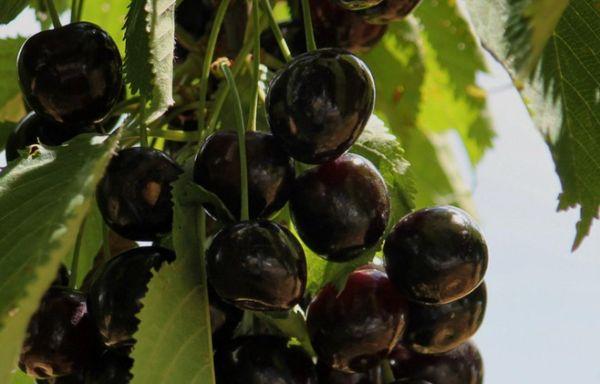

Black Large
A hybrid, frost-resistant fruit crop variety obtained in the 90s of the last century by the famous breeder A. Ya. Voronchikhina. Almost 20 years ago, Black Large Cherry was entered in state registers of fruit crops and recommended for cultivation in southern and temperate climatic zones. The varietal variety is actively cultivated in the territory of the CIS countries.
An adult tree grows up to 3-4 m. The crown is thickened, spreading, elongated. The first harvests from trees are harvested for 3-4 years of growth. For fruiting, the tree needs neighbors pollinators with the same flowering time. The berries are juicy, large, up to 8 g. Ripening dates are at the beginning of July.
See also
Description of the 20 best frost-resistant cherry varieties, planting and care
To read
A variety of fruit crops has a weak immunity to diseases and pests.
Vladimirskaya
The history of the Vladimir cherry variety goes back centuries. It is believed that the cultivation of cherries in Russia began with this type of fruit crop.
Depending on the climatic zone and care, mature trees reach from 2.5 to 5 m. The crown is spreading, dense, leaves are rare, but large.
The harvest ripens in mid-July. I am middle years, maroon and black, juicy, sweet and sour.


Trees easily tolerate subzero temperatures, but after strong and prolonged frosts, the yield drops.
Vladimir cherry does not bear fruit without pollinator neighbors. Therefore, cherry varieties with similar flowering times are planted nearby.
Griot Rossoshansky
A varietal variety of Griot Rossoshansky cherries bred by Russian breeders. Mature trees grow up to 6 m, the shape of the crown is oval with multiple shoots and leaves.
Ripening of berries occurs in the middle of summer. Berries of medium size, maroon color with juicy pulp, sweet and sour taste.
Zhukovskaya
Cherry Zhukovskaya bush variety of the variety. Fruit crop on its own
pollinated, has a high natural immunity to fungal and viral infections.
Fruiting begins 3-4 years after planting in open ground. Up to 25 kg of ripe berries are removed from one adult tree. Resistant to frost, allows cherry cultivation in northern latitudes.
The berries are large, from 4 to 7 g, of a dark burgundy hue, with a rich sweet and sour taste.
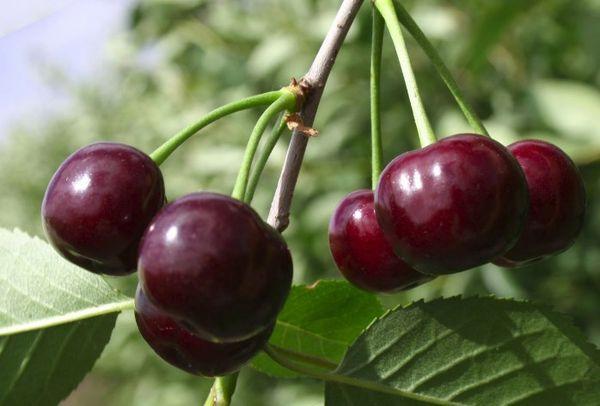

Rossoshanskaya Black
A self-fertile variety of cherries bred in the Rossosh nursery at the gardening station. The fruit crop tolerates frost well, but has a weak immunity to many diseases.
Ripening of berries occurs at the end of July. Fruits are medium to large in size, dark in color with a dense skin and sweet and sour taste.
Anthracite
A new variety of fruit crops, developed in the city of Oryol, has been available for cultivation since 2006. A small cherry tree will grow up to a maximum of 2 m, which greatly facilitates the care of the plant and the collection of ripe berries. The tree is able to partially self-pollinate, but other varieties of cherries are needed to obtain a high-quality and abundant harvest.
The fruits are large, from 4 to 6 g, of a dark, almost black hue, with a dense skin and juicy pulp of a sweet and sour taste.
Chocolate girl
A variety of the Shokoladnitsa variety, bred at the end of the last century. Thanks to experienced scientists, the variety was created taking into account the best characteristics of the fruit crop.
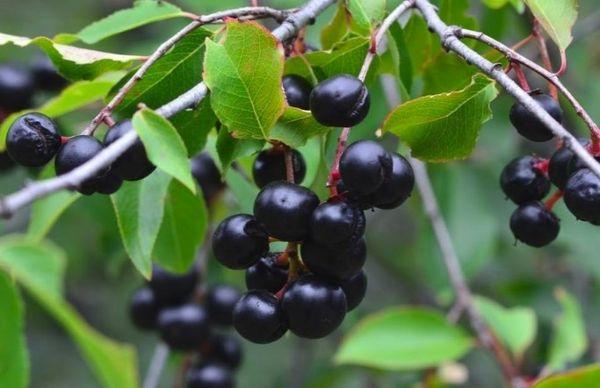

A mature tree will grow up to only 2.5m, making it easy to care for your cherry and harvest. The garden plant is pollinated independently, but if there is another variety of cherries in the neighborhood, the crop yield increases.
Fruiting begins from 3-4 years of growth. The harvest ripens in the second half of summer, reaching up to 15 kg per tree.
Fruits are large to medium in size with brown skin and sweet, dark flesh.
Memory Voronchikhina
A self-fertile variety of fruit culture was bred by Russian breeders at the beginning of this century.
The trees are tall, reaching 5 m. The fruits are large, from 5 to 7 g, dark purple and black shades, with sweet and sour, juicy pulp.
Fruiting depends on the climatic characteristics of the region and weather conditions.
Consumer goods Black
The cherry variety was bred by the world famous scientist breeder Michurin.
The trees are undersized, with a spreading crown, self-fertile. The fruit is medium in size, juicy and sweet.
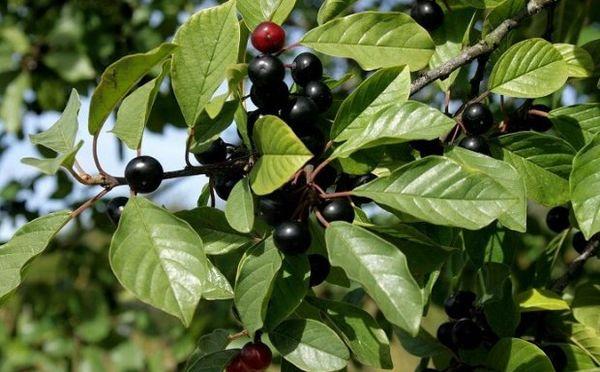

Fruit crops are susceptible to fungal and viral diseases. The yield is average, depending on weather conditions and care. The resistance to frost is average, therefore, in the northern regions, trees are additionally insulated before the onset of winter.
Breeding history and breeding region
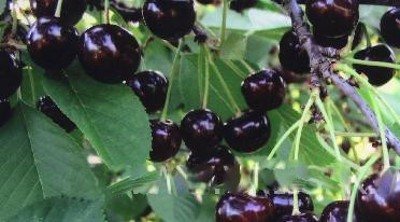

According to some reports, the parent varieties are Consumer goods Black and Rossoshanskaya.
The new species was obtained by sowing a freely pollinated local variety at the Rossoshan experimental station named after A. Ya. Voronchikhina. By the way, the hand of this breeder, after which the station is named, belongs to the varieties Nadezhda, Black Krupnaya.
After hatching, black Rossoshanskaya cherry became widespread in household and industrial plots.
Since 1986 Lower Volga region, as well as North Caucasian and Central Black Earth became the main areas in which this variety is cultivated.
Morozovka, Memory of Yenikeev, Zhivitsa and Turgenevka also successfully grow in these regions.
How to plant on the site
The correct choice of a place for planting seedlings and adherence to planting dates, a guarantee to get a harvest of tasty and juicy berries.
Cherry trees are planted outdoors depending on the climatic and weather conditions of the region.
In latitudes with a southern climate, planting work is carried out in the fall. In the northern regions, seedlings are planted in open ground in early spring. In areas with a temperate climate, tree planting can be carried out in spring and autumn.
Preparing seedlings
When buying seedlings, a thorough inspection of the planting material is carried out. Best of all, 1-2 year old plants with well-developed rhizomes take root. The trunk of the seedling is even, without visible damage, with 2-3 skeletal branches. The root system is well moistened, without growths, seals, fungal and putrefactive manifestations.
See also
Cherry Fly Attack Signs and Best Fighting Techniques
To read
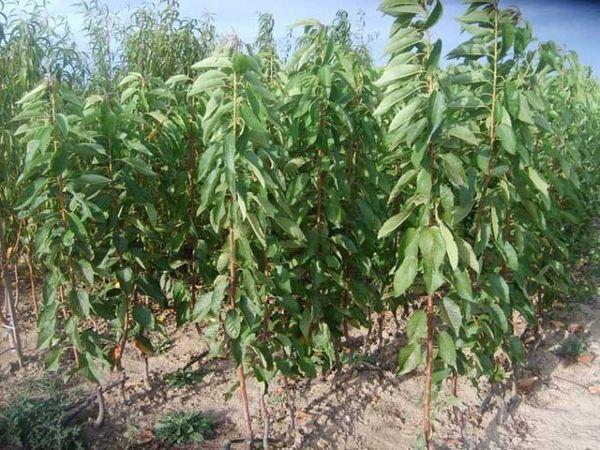

Before planting in open ground, the seedlings are placed for 4-8 hours in a container with warm, settled water. The roots of the tree are treated with special antibacterial drugs.
Important! If the seedlings have overdried rhizomes, then they are left in water for 15-20 hours.
Site selection and preparation of the landing pit
The development and growth of the tree depends on the place chosen for planting seedlings.
Well-lit land plots that are not blown by winds and drafts are suitable for cherries. The permissible level of groundwater depth is at least 1.5-2 m.
If tree planting is planned in the spring, soil preparation begins in the fall.
Peat, sand and humus are added to dense, heavy soil. Soil with high levels of acidity is mixed with lime. The land plot is carefully dug up, organic fertilizers are added and left until spring.
Planting technology
The main work is carried out 2-3 weeks before planting seedlings in open ground.
- The soil is carefully loosened and holes are dug, 50-60 cm deep, 60-80 cm wide. The distance between plantings is chosen based on the size of adult trees, but not less than 2.5-3 meters.
- Small pebbles or crushed stone are laid out at the bottom of the hole.
- The soil dug out of the hole is mixed with mineral fertilizers and ash.
- A support for the seedling is driven into the center of the hole and fertile soil is poured.
- The seedling is placed in the center of the hole, the rhizomes are carefully distributed and covered.
- Then the soil is tamped and watered abundantly. The tree is fixed on a support.


Important! After the end of planting activities, the near-stem circle of the seedling is mulched with sawdust or dry grass.
Advice
In order to become the owner of an incredible cherry orchard, you need to make a sufficient amount of effort and knowledge both in choosing the varieties of fruit trees themselves and in the subsequent care of them.
One of the main aspects is the choice of the variety that will become the main one in the garden. All factors must be taken into account here: starting from global things, such as the correspondence of the variety to the region, and the proximity of the main tree to others that will be planted for pollination.
The next step after choosing a variety is planting in the ground. Only after carefully studying the time of planting a new tree should you start taking action. If the implementation of this step is not done on time or in a poor quality, the tree may grow poorly or not take root at all.
Do not neglect the treatment of trees from harmful insects and diseases typical of cherries. If you do not carry out treatment, then the tree will simply die, and all the efforts and resources invested in it will be wasted.
You can only be afraid of chemicals and pesticides from treating trees when the owner chooses cheap products. There are a number of products on the market today that are excellent tools in the struggle for a crop, safe for fruits and for humans. The main thing is to have the desire and make a little effort, and the result will not be long in coming.
You will learn how to quickly make delicious cherry jam in the following video.
Tags: cherry, large, description, rossoshansky, variety, black
About
«Previous post
We organize care
The main care of the fruit crop includes watering, feeding, pruning and preventive treatment of trees from pests and diseases.
Watering
Cherries are demanding for watering, but at the same time they cannot stand waterlogging of the soil. Watering is especially important for fruit crops, during flowering and ovary formation. At this time, the trees are irrigated 1 time for 7-10 days.
As soon as the fruits begin to turn red and ripen, watering is reduced, or stopped altogether.
Fertilization
They begin to fertilize cherry trees after the beginning of fruiting, for 3-4 years of growth.
In early spring, fertilizing with a nitrogen content is applied to the soil. After the end of flowering, organic fertilizers are added to the soil. In the fall, before a long rest, mineral fertilizing is introduced.
Important! The rate of fertilization and dressing is calculated from the age and size of the fruit tree.
Shaping and rejuvenating pruning
Cherry trees grow and develop rapidly. Many young shoots appear annually, which increase the crown and reduce the yield of the fruit tree.
- On the main conductor, all branches that are below the 40-50cm mark are cut off.
- Further, tiers are formed annually, leaving 3-5 branches on each of them.
- The branches growing inside the formed crown are completely cut out.
In spring and autumn, they carry out sanitary pruning of trees, removing all broken, weak, frozen and damaged layers.
Protection against diseases and pests
If cherry trees are attacked by pests, they are treated with professional preparations based on insecticides. Also, such treatment is useful for trees as a preventive measure in early spring, before the growing season, and in late autumn.
For the prevention and treatment of fungal and viral diseases, copper-based preparations are used.


Barrel circle care
The root system of a tree develops much faster than its aerial part.The trunk circle in volume should exceed the available crown at least twice. The soil around the tree should always be oxygen-permeable and moderately moist.
Work on loosening the soil around the fruit crop is carried out 3-4 times for the entire season. In the fall, the trunk circle is carefully dug up and mulched with sawdust and dry foliage.
Growing features


Planting and caring for cherries of this variety is not difficult, the main thing is to find an open, sunny place that would be protected from the cold winds on the north side. Cherries do not like too moist soil, but its acidity should be close to neutral.
It feels best in sandy loam or loamy soil. When rooting a seedling, do not forget to enrich the soil with organic fertilizers, potassium chloride and superphosphate. In the future, the soil needs to be fertilized periodically, and lime should be applied every 5–6 years.
Water your young tree, prune it in time, protect it from pests and diseases, especially this variety, which has a weak resistance to fungal infections, and recommend this variety to friends and acquaintances on social networks.
Good luck!
Who suits
Who suits dark cherry hair color - people who are not afraid to make themselves known. This palette looks most impressive on long and medium-length curls with neat styling.
How to find the right shade:
- fair-haired by nature should prefer muted, light tones;


- brunettes / brunettes or owners of dark brown hair with peach skin need to pay attention to the dark scarlet color;


- any tone, even the most saturated, is suitable for the Winter color type with blue, gray or brown eyes;


- brown-eyed or green-eyed owners of dark skin can choose the tone of mahogany;


- monochromatic coloring or sharp transitions of contrasting colors are suitable for young people;


- women over 30 are recommended rich, deep tones or coloring with separate strands without abrupt transitions.


Young guys prefer rich solid colors or a contrasting combination of dark natural and wine shades. Older men choose brown-red to emphasize their individuality. Often they dye their beard and even eyebrows. But it is only necessary for courageous natures to decide on such transformations, who are ready for the fact that not everyone will be able to accept a new image.






